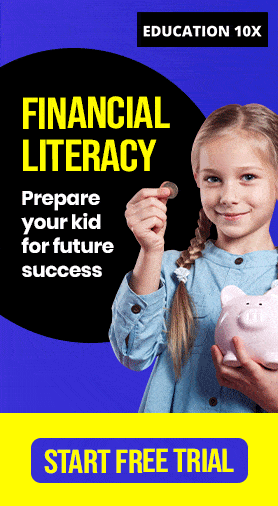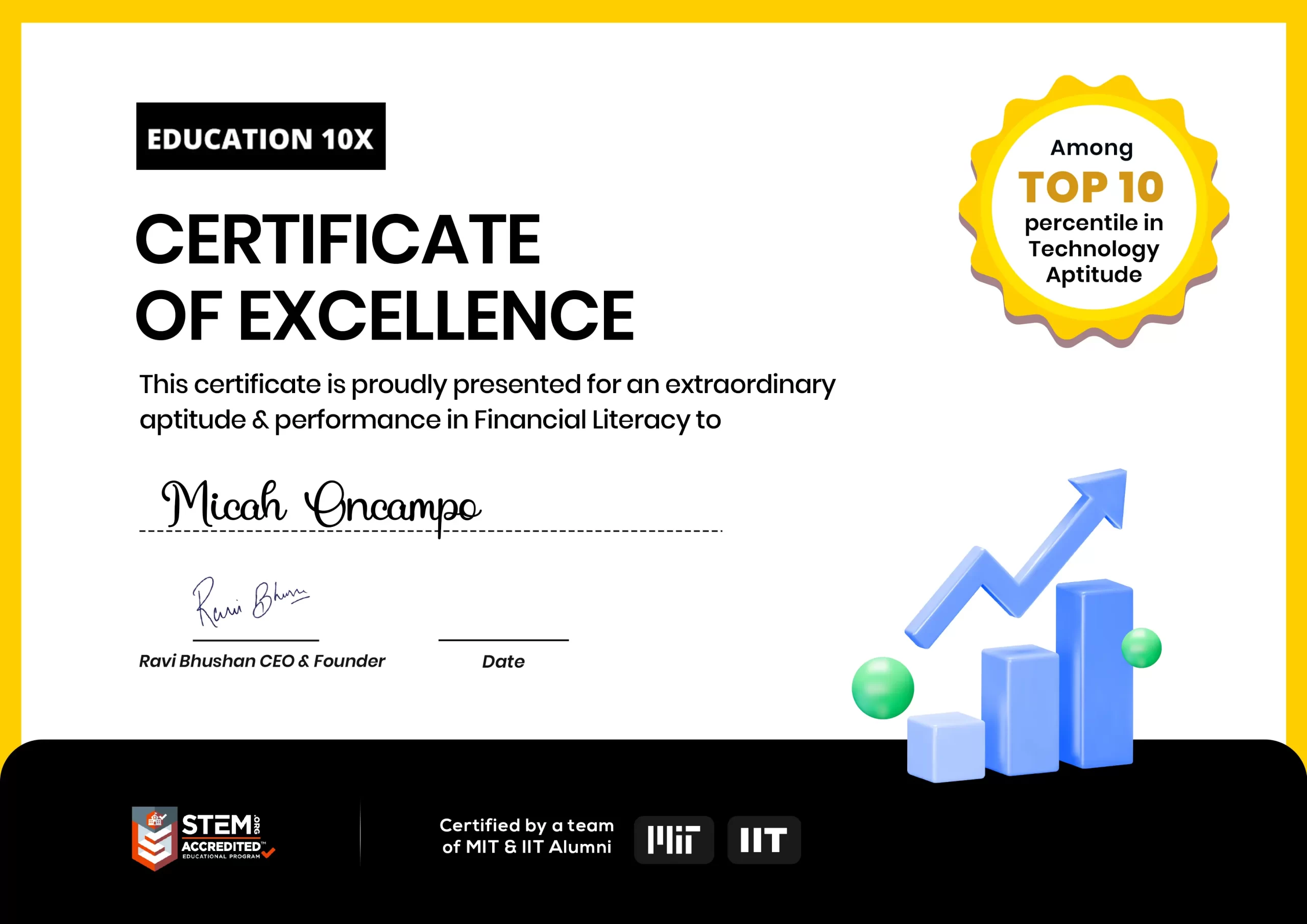In today’s fast-paced and financially driven world, it has become increasingly important to equip children with the necessary skills and knowledge to manage money effectively. Teaching about best savings account for kids from an early age not only instills responsible financial habits but also lays the foundation for a secure and successful future.
One effective way to introduce kids to the world of finance is by opening a savings account tailored specifically for them. These specialized accounts offer various benefits, such as cultivating a sense of financial responsibility, fostering savings habits, and providing a safe place for children to manage and grow their money.
In this article, we will explore the importance of teaching children about money management and delve into the advantages of the best savings account for kids. By empowering financial literacy for kids and providing them with suitable savings tools, we can set them on a path towards lifelong financial well-being.
Table of contents
- Key Factors to Consider When Choosing Best Savings Account for Kids
- Account Types
- Interest Rates
- Fees and Charges
- Accessibility and Convenience
- Account Management and Parental Controls
- Step-by-Step Guide to Opening Best Savings Account for Kids
- Teaching Children About Money and Savings
- Tax Considerations and Benefits
- Top Picks: Best Savings Accounts for Kids
- Conclusion
- Frequently Asked Questions
Key Factors to Consider When Choosing Best Savings Account for Kids
When it comes to teaching children about financial responsibility, opening best savings account for kids can be an excellent first step. Not only does it teach them the value of saving and budgeting, but it also helps instill important lifelong habits.
However, choosing the best savings account for kids can be a daunting task for parents. With a variety of account types and banking options available, it’s essential to consider a few key factors before making a decision. In this blog post, we will explore the main factors to consider when choosing a savings account for kids.
Account Types

Basic Savings Accounts
Basic savings accounts are a common option for children. They are typically offered by traditional banks and credit unions and are designed to provide a safe place for kids to store their money.
These accounts often have minimal fees and can be opened with a small initial deposit. Basic savings accounts may not offer many additional features or incentives, but they are a reliable choice for parents looking for a straightforward savings option.
Children’s Savings Accounts
Some banks offer specialized savings accounts specifically designed for children. These accounts often come with features that make saving more engaging and educational gifts for kids.
They may include features like online access, mobile apps, and interactive tools to help children track their savings and set financial goals. Children’s savings accounts can be a great way to introduce kids to the world of banking and money management while making the experience more fun activities for kids and interactive.
Youth Banking Programs
Another option to consider is youth banking programs. These programs are often offered by credit unions or online bank account for kids and provide comprehensive financial education for young savers.
In addition to a savings account, they may offer educational resources, financial literacy programs, and even opportunities for children to earn interest on their savings. Youth banking programs are ideal for parents who want a more holistic approach to teaching their children about money management.
Interest Rates

Understanding How Interest Works
Before we dive into the importance of interest rates, let’s briefly explain how interest works. When you deposit money into a savings account, the bank pays you a certain percentage of interest on that balance. This interest is essentially the bank’s way of rewarding you for keeping your money with them. Over time, the interest earned can contribute significantly to your savings, allowing your money to grow.
Comparing Interest Rates Among Different Banks
When choosing a savings account for your child, it’s crucial to compare interest rates among different banks. The interest rate determines how much money your child will earn on their savings. A higher interest rate means more money will be added to their account over time.
To compare interest rates, you can visit the websites of various banks or contact them directly to inquire about their rates. Some banks may offer different types of savings accounts specifically designed for children. It’s important to note that interest rates can vary widely among banks, so it’s worth exploring multiple options to find the most favorable rate.
Additionally, keep in mind that interest rates may change over time. While one bank may have the highest rate at a given moment, another bank might offer better rates in the future. Therefore, it’s a good idea to periodically review the interest rates and consider switching banks if a better option becomes available.
Fees and Charges

Common Fees Associated with Kids’ Savings Accounts
Account Maintenance Fees: Some banks charge a monthly or quarterly account maintenance fee for kids’ savings accounts. These fees can eat into the interest earned by the account and reduce the overall savings. It’s important to inquire about these fees before opening an account and consider whether they are reasonable for the services provided.
Minimum Balance Fees: Certain savings accounts require a minimum balance to be maintained. Falling below this threshold can result in a penalty fee. While this fee may not be significant, it’s still important to be aware of it. Look for accounts with low or no minimum balance requirements, especially if your child is just starting to save.
Withdrawal Fees: Kids’ savings accounts typically encourage regular savings by limiting the number of withdrawals allowed per month. If the account surpasses the permitted limit, a fee may be charged for each subsequent withdrawal. This fee is designed to discourage frequent withdrawals and promote consistent savings habits. Consider the withdrawal restrictions and associated fees when selecting an account, especially if your child may need access to their savings frequently.
ATM Fees: If the savings account provides an ATM card for the child to access their funds, there may be fees associated with using ATMs that are not affiliated with the bank. These fees can quickly add up if your child frequently withdraws cash from non-network ATMs. Look for savings accounts that offer a wide network of ATMs or reimburse fees for using out-of-network ATMs.
How to Minimize or Avoid Fees
Compare Account Options: Before opening a savings account for your child, research and compare different banks or credit cards for kids unions to find the one that offers the most favorable terms and conditions. Look for accounts specifically designed for children with minimal fees and competitive interest rates.
No-Fee Accounts: Some banks offer specialized savings accounts for kids that are fee-free or waive fees until a certain age. These accounts may come with restrictions or conditions, so make sure to read the fine print. Choosing a no-fee account can help you avoid unnecessary charges.
Maintain a Sufficient Balance: To avoid minimum balance fees, make sure your child’s savings account consistently maintains the required minimum balance. Encourage regular deposits to prevent falling below the threshold and incurring penalties.
Educate on Withdrawal Limits: Teach your child about the importance of budgeting and saving by explaining the withdrawal limits associated with their savings account. Encourage them to plan their withdrawals carefully to avoid excess fees.
Opt for In-Network ATMs: When selecting a savings account that provides an ATM card, ensure that the bank has an extensive network of ATMs in convenient locations. This will minimize the need to use out-of-network ATMs and reduce associated fees. Additionally, educate your child about the importance of using network ATMs to avoid unnecessary charges.
Accessibility and Convenience

Online Banking Features
In today’s digital age, online banking features have become increasingly important for savings accounts, including those designed for kids. When evaluating a savings account for your child, check if the bank offers online banking services specifically tailored for minors.
Online access provides children with the convenience of managing their account from the comfort of their home, allowing them to track their savings, set goals, and monitor their progress.
Look for features such as a user-friendly interface, balance updates, transaction history, and the ability to transfer money between accounts. Additionally, some banks offer educational tools and resources on their online platforms, which can help kids learn about saving and financial responsibility in a fun and engaging way.
ATM Access for Kids
Providing kids with access to ATMs can be an excellent way to introduce them to financial independence while keeping a watchful eye on their transactions. When choosing a savings account, inquire about ATM access for kids.
Some banks offer specialized ATM cards for children, which can be linked to their savings account. These cards usually have limits on daily withdrawals and spending, ensuring that children do not overspend or withdraw excessive amounts.
ATM access enables children to learn how to make deposits, withdraw money when needed, and understand the concept of financial transactions. However, it’s essential to teach them about responsible ATM usage, the importance of keeping their PIN secure, and the potential risks associated with ATMs.
Account Management and Parental Controls

Parental supervision options
One of the primary concerns for parents when opening a savings account for their child is the level of control they have over the account. Look for a piggy bank for kids or financial institution that offers parental supervision options.
This may include features like joint ownership, where both the child and the parent have access to the account, or custodial accounts, where the parent has control over the funds until the child reaches a certain age. These options allow parents to guide and monitor their child’s savings activities.
Tracking and monitoring features
A good savings account for kids should provide robust tracking and monitoring features that allow parents to keep a close eye on their child’s savings progress.
Look for features such as online or mobile banking, where you can easily view the account balance and transaction history. Some banks also offer tools that categorize expenses, set savings goals, and provide financial education resources to help children learn about managing their money.
Step-by-Step Guide to Opening Best Savings Account for Kids
Teaching children about money management is an essential life skill that can set them up for financial success in the future. One effective way to introduce them to the world of banking and saving is by opening a savings account for kids.
This not only encourages a habit of saving but also helps them understand the importance of setting financial goals and working towards them. If you’re considering opening a savings account for your child, here is a step-by-step guide to help you through the process.

Required Documents and Identification:
Social Security Number (SSN): You will need your child’s SSN to open a savings account. If your child doesn’t have an SSN yet, you can apply for one through the Social Security Administration.
Birth Certificate: Most banks and credit unions require proof of your child’s identity and age, which can be provided by their birth certificate.
Parent/Guardian Identification: Make sure to bring your own identification documents, such as a driver’s license or passport, as you will need them to prove your identity and relationship to the child.
Choosing the Right Bank or Credit Union:
Research Different Financial Institutions: Start by researching different banks and credit unions in your area that offer savings accounts for kids. Look for institutions that have a good reputation, convenient locations, low fees, and attractive interest rates. Explore financial literacy resources, including learning games for kids, that can help them grasp fundamental concepts about savings, interest, and responsible money management.
Consider Account Features: Compare the features and benefits offered by different banks. Some accounts may offer incentives like higher interest rates, rewards programs, or educational resources for kids.
Read Reviews and Seek Recommendations: Look for reviews and recommendations from other parents to get a better understanding of the customer experience and the quality of service provided by different institutions.
Opening the Account:
Visit the Chosen Institution: Once you have selected a bank or credit union, visit their branch in person with your child. Some institutions may allow you to open an account online or over the phone, but visiting in person provides an opportunity for your child to experience the process firsthand.
Speak with a Bank Representative: Explain that you are interested in opening a savings account for your child. The bank representative will guide you through the process, explain the account terms and conditions, and help you fill out the necessary forms.
Complete the Application: Provide the required documents and information, including your child’s SSN, birth certificate, and your identification. You may also need to fill out additional forms specific to the institution.
Deposit Money: Most savings accounts require an initial deposit to activate the account. Determine the amount you wish to deposit and provide the funds to the bank representative. Encourage your child to contribute some of their own money to help them understand the value of saving.
Review the Account Details: Before finalizing the account opening, carefully review the account details, including the minimum balance requirements, interest rates, and any fees associated with the account.
Setting Up Automatic Transfers and Allowances:
Discuss Saving Goals: Talk to your child about their saving goals and how they can allocate a portion of their allowance or any money they receive as gifts towards their savings. . Engage them in discussions and activities that promote financial responsibility, such as memory games for kids, which can make the learning process enjoyable and memorable. Encourage them to save consistently and discuss the benefits of long-term saving.
Set Up Automatic Transfers: Many banks offer automatic transfer options that allow you to schedule regular transfers from your child’s checking account or your account to their savings account. Set up these transfers to help your child develop a saving routine.
Establish an Allowance System: Consider establishing an allowance system where your child receives a regular amount of money for completing chores or as a weekly allowance. Encourage them to save a portion of this allowance and deposit it into their savings account.
Monitor and Celebrate Milestones: Regularly check your child’s savings account with them to monitor their progress and celebrate milestones. This will keep them motivated and reinforce the importance of saving.
By following this step-by-step guide, you can help your child develop healthy financial habits and introduce them to the world of banking and saving. Opening a savings account for kids not only provides a safe place to store their money but also lays the foundation for a lifetime of financial responsibility. Start early and watch as your child learns and grows in their understanding of money management.
Teaching Children About Money and Savings
In today’s increasingly complex world, it is essential to equip children with the knowledge and skills they need to navigate financial matters responsibly, which is a crucial aspect of child development. Teaching children about money and savings from an early age can lay the foundation for a lifetime of financial well-being.
By instilling essential principles like budgeting, saving, and goal setting, we empower children to make informed decisions and develop healthy financial habits. In this blog, we will explore age-appropriate financial education, encouraging saving habits, and the importance of goal setting and rewards.

Age-Appropriate Financial Education
Introduce basic concepts early: Even young children can start learning about money by understanding its purpose and value. Begin by explaining the difference between needs and wants and the importance of making choices.
Teach counting and simple math skills: By introducing counting, addition, and subtraction using play money or coins, children can grasp basic numerical concepts and develop their arithmetic abilities.
Engage in real-life experiences: Take advantage of everyday opportunities to teach financial lessons and leadership skills for kids. For example, involve children in grocery shopping, comparing prices, and making decisions based on budget constraints.
Introduce saving and spending: As children grow older, teach them about the concept of saving. Encourage them to set aside a portion of their allowance or earnings for short-term goals, such as purchasing a toy, while also emphasizing the importance of long-term savings.
Encouraging Saving Habits
Set up a savings account: Open a savings account for your child to provide hands-on experience with banking. Involve them in monitoring their balance and discussing interest rates, nurturing their understanding of financial institutions.
Set savings goals: Help your child set achievable savings goals, such as saving for a specific toy or an outing with friends. Break down larger goals into smaller milestones to make progress more tangible and rewarding.
Provide incentives: Offer incentives to motivate your child to save. For example, match a percentage of their savings or create a reward system where they earn points for reaching milestones. This helps reinforce the value of saving and delayed gratification.
Encourage entrepreneurial ventures: Encourage your child to explore small business ideas or undertake simple tasks to earn extra money. This can develop their entrepreneurial spirit and teach them the value of hard work, money management, and the importance of saving.
Goal Setting and Rewards:
Teach goal-setting skills: Teach your child the importance of setting realistic financial goals. Help them identify their desires, such as saving for a bike or a future vacation, and guide them through the process of creating an action plan.
Break goals into achievable steps: Break down larger goals into smaller, manageable steps. This approach helps children understand that consistent effort and progress over time lead to accomplishing their objectives. By breaking the process into visual and easily digestible pieces, mind mapping for kids enhances their ability to grasp complex concepts and reinforces the importance of setting achievable milestones on the path to success.
Celebrate milestones: Recognize and celebrate your child’s achievements along the way. Celebrations can be as simple as acknowledging their progress or providing small rewards that align with their savings goals. This fosters a positive association with saving and encourages perseverance.
Encourage charitable giving: Teach your child the importance of giving back to the community by supporting a cause they care about. Encouraging philanthropy from an early age helps children develop empathy and a sense of social responsibility.
Tax Considerations and Benefits
Teaching children about the importance of saving money from an early age is a valuable life lesson that can set them on a path to financial success. One effective way to cultivate their saving habits is by opening a savings account specifically designed for kids. This approach not only introduces them to basic financial concepts but also encourages positive thinking for kids as they begin to envision their financial goals and the rewards of responsible saving.
Not only do these accounts offer a safe place to accumulate funds, but they also provide several tax considerations and benefits. In this blog, we will explore the tax advantages associated with the best savings accounts for kids and explain how they can benefit both children and their parents.
Tax Benefits of Kids’ Savings Accounts
Tax-Free Growth: Many countries offer specialized savings accounts, such as the 529 plan in the United States or Junior ISAs in the United Kingdom, which provide tax advantages for kids’ savings. These accounts allow contributions to grow tax-free over time, meaning any interest earned or investment gains are not subject to income tax. By starting early and allowing the account to accumulate over the long term, the potential for tax-free growth can significantly enhance the child’s savings.

Tax Deductions for Contributions: In certain jurisdictions, parents or guardians may be eligible to deduct contributions made to their child’s savings account from their taxable income. For instance, in the U.S., contributions to a 529 plan can often be deducted from state income taxes, subject to specific limitations and regulations. This tax deduction reduces the overall tax burden and encourages parents to save for their child’s future.
Gift Tax Exclusions: When grandparents, relatives, or family friends contribute to a child’s savings account, they can often take advantage of gift tax exclusions. These exclusions allow individuals to gift a certain amount of money each year without incurring gift taxes. By channeling funds into a child’s savings account, donors can potentially reduce their taxable estate while helping the child build a secure financial foundation.
Lower Tax Rates for Children: Children typically have lower tax rates compared to adults, as their taxable income thresholds are generally lower. This can be advantageous when the child’s savings account generates interest or other income. In many cases, the first portions of the child’s income are subject to lower tax rates or may even be entirely tax-free, allowing the funds to grow more efficiently.
Educational Savings Incentives: Several countries offer specialized savings accounts, such as the Education Savings Account (ESA) in the U.S. or the Registered Education Savings Plan (RESP) in Canada, which provide tax benefits for educational purposes. These accounts allow parents to contribute funds that can grow tax-free and be withdrawn without incurring income taxes when used for qualified educational expenses, such as tuition fees, free books for kids, and supplies.
Top Picks: Best Savings Accounts for Kids
Teaching kids the importance of saving money from an early age can set them up for a secure financial future. One effective way to instill this habit is by opening a savings account specifically designed for children. This approach aligns with teaching kids responsibility, as they learn the value of managing their funds, setting goals, and making informed decisions about their savings.
These accounts offer unique features and benefits that cater to the needs of young savers. In this blog post, we will highlight a few recommended options for the best savings accounts for kids, focusing on their features and advantages.

XYZ Junior Savings Account
The XYZ Junior Savings Account is specifically designed for children and offers an excellent platform for them to learn about saving and money management. Key features of this account include:
No minimum balance requirement: This account allows children to start saving without the pressure of maintaining a minimum balance, making it accessible to all.
Competitive interest rates: The XYZ Junior Savings Account offers competitive interest rates, allowing the savings to grow over time.
Parental controls: Parents or guardians can oversee the account and provide guidance to their child, ensuring a safe and educational experience.
ABC Kids Savings Account
The ABC Kids Savings Account is another popular option that focuses on creating a positive savings experience for children. Here are its notable features:
Reward-based savings: This account encourages saving through a rewards program, offering incentives such as stickers or small gifts when specific savings goals are reached. It helps make the saving journey enjoyable and exciting for kids.
Financial literacy tools: The ABC Kids Savings Account provides access to age-appropriate educational materials and resources to help children develop financial literacy skills.
Online and mobile banking: Children can access their account online or through a mobile app, which offers a convenient and interactive way for them to manage their savings.
Junior Money Manager Account:
The Junior Money Manager Account is an innovative savings option that empowers kids to take charge of their finances. Its standout features include:
Goal-setting features: This account allows children to set savings goals and track their progress, providing a sense of accomplishment as they reach each milestone.
Budgeting tools: The Junior Money Manager Account includes budgeting tools that help kids allocate their savings toward different categories, such as saving for a toy, donating to a charity, or investing in a long-term goal.
Financial education resources: This account offers access to financial education materials, including interactive games for kids to play and quizzes, to enhance children’s financial knowledge and skills.
Conclusion
In conclusion, it is imperative to encourage parents to take action and open best savings account for kids. Financial security and independence are crucial aspects of a child’s future, and starting early with savings can make a significant difference in their lives.
By establishing a savings account for children, parents provide them with a valuable foundation for financial literacy and responsibility. It instills the habit of saving, teaching them the importance of setting goals, and the rewards of patience and delayed gratification. These essential life skills will serve them well as they navigate the complexities of adulthood.
Opening a savings account for children also offers numerous long-term benefits. It provides a safe and secure place to accumulate funds for future expenses such as education, starting a business, or purchasing a home. By investing in their children’s financial well-being, parents empower them to pursue their dreams and aspirations without undue financial constraints.
Importantly, opening a savings account for children demonstrates parents’ commitment to their children’s future and their belief in their potential. It sends a powerful message that financial stability and security are paramount, and that they are invested in their children’s success.
In conclusion, by encouraging parents to take action and open a savings account for their children, we pave the way for a brighter and more secure future. Financial literacy, responsibility, and independence are valuable gifts that parents can bestow upon their children.
By starting early and providing the tools and resources for financial success, we empower the next generation to thrive and make informed choices, ultimately creating a society built on financial well-being and stability.
Elevate your child’s learning journey with BrightChamps, the leading EdTech company dedicated to cultivating young minds through innovative robotics, financial education, and coding courses.
Frequently Asked Questions
A1: A savings account for kids is a bank account specifically designed for children, allowing them to deposit and save money.
A2: Having a savings account for children is important as it promotes financial literacy, teaches the value of saving, and helps develop responsible money habits from an early age.
A3: Key features to look for in a savings account for kids include low or no fees, competitive interest rates, accessibility, parental controls, and educational resources.
A4: Yes, parents can open a savings account on behalf of their child as long as they meet the bank’s requirements and provide the necessary documentation.
A5: Age restrictions for opening a savings account for kids may vary depending on the bank, but typically children of any age can have a savings account with a parent or guardian as a joint account holder.
A6: To compare different savings account options for children, consider factors such as interest rates, fees, minimum balance requirements, online banking features, and additional benefits tailored for kids.
A7: Starting early with a savings account for kids has several benefits, including the potential for long-term savings growth, instilling good financial habits, and teaching the importance of setting and achieving financial goals.
A8: Kids’ savings accounts may have specific tax advantages, such as tax-free earnings or lower tax rates on interest, but these benefits can vary based on the country and specific account type. It’s best to consult a tax advisor or financial institution for accurate information.
A9: Parents can encourage their children to save money by setting savings goals, offering incentives or rewards, leading by example, and providing financial education and guidance.










